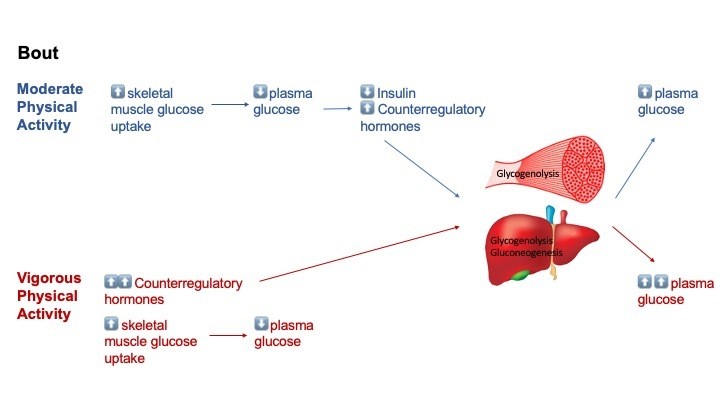
The Importance of Regular Exercise in Diabetes Management
The Importance of Regular Exercise in Diabetes Management
Diabetes is a health condition that affects millions of people worldwide. It can bring about serious health challenges, but with proper care and attention, it can be managed effectively. One essential aspect of diabetes management is regular exercise. In this article, we will explore why exercise is so important for people with diabetes, and how it can lead to better health and an improved quality of life.
The Link Between Exercise and Diabetes
Exercise plays a crucial role in diabetes management, especially for those with Type 2 diabetes. Here’s why:
- Improved Insulin Sensitivity: When you exercise, your muscles need more glucose for energy. To accommodate this increased demand, your cells become more sensitive to insulin, allowing glucose to enter them more efficiently. This helps lower blood sugar levels.
- Weight Management: Maintaining a healthy weight is essential for managing Type 2 diabetes. Regular exercise helps you burn calories, lose excess weight, and control body fat, which can contribute to better blood sugar control.
- Lowering Blood Sugar Levels: Physical activity can lead to an immediate drop in blood sugar levels. Regular exercise can have a lasting impact on improving blood sugar control over time, making it easier to manage diabetes.
- Cardiovascular Health: Diabetes increases the risk of heart disease. Exercise strengthens the heart and improves overall cardiovascular health, reducing this risk for people with diabetes.
- Stress Reduction: Managing diabetes can be stressful, but exercise is a natural stress reliever. It releases endorphins, which can boost your mood and reduce stress levels, making it easier to cope with the challenges of diabetes.
Types of Exercise for Diabetes Management
The good news is that you don’t need to become a professional athlete to reap the benefits of exercise in diabetes management. Here are some types of exercise that are effective and safe for people with diabetes:
1. Aerobic Exercise
Aerobic or cardio exercises increase your heart rate and breathing. They are excellent for improving cardiovascular fitness and burning calories. Here are some aerobic exercises to consider:
a. Walking: One of the simplest and most accessible exercises. Aim for brisk walks that make you slightly breathless.
b. Cycling: Whether on a stationary bike or a regular one, cycling is gentle on the joints and a great way to improve cardiovascular health.
c. Swimming: A full-body workout that’s easy on the joints. Swimming can help build strength and endurance.
d. Dancing: Not only a fun activity but also a great way to get your heart rate up and improve coordination.
e. Aerobic Classes: Joining group classes like Zumba, aerobics, or step aerobics can add an element of social interaction to your exercise routine.
2. Strength Training
Strength training, also known as resistance or weight training, focuses on building muscle. It’s particularly beneficial for those with diabetes. Muscle tissue uses more glucose than fat, which can help control blood sugar levels. Here’s how to incorporate strength training into your routine:
a. Bodyweight Exercises: Start with simple exercises like squats, lunges, push-ups, and planks, which use your body weight for resistance.
b. Free Weights: As you progress, you can add dumbbells, resistance bands, or kettlebells to increase resistance.
c. Machines: Many gyms offer weight machines designed to target specific muscle groups. These are great for beginners.
d. Frequency: Aim for strength training sessions 2-3 times a week, allowing your muscles to recover between sessions.

3. Flexibility and Balance Exercises
Flexibility and balance exercises help improve mobility, reduce the risk of injury, and enhance overall well-being. These exercises include:
a. Stretching: Gentle stretching exercises can increase flexibility and relieve muscle tension. Consider yoga or basic stretching routines.
b. Tai Chi: This ancient practice combines slow, flowing movements with deep breathing. It enhances balance and reduces stress.
c. Pilates: A low-impact exercise that focuses on core strength, flexibility, and posture. It can be adapted to various fitness levels.
d. Balance Exercises: Simple exercises like standing on one foot or walking heel-to-toe can improve balance and reduce the risk of falls.
4. Interval Training
High-Intensity Interval Training (HIIT) involves short bursts of intense exercise followed by brief recovery periods. HIIT is time-efficient and effective for improving insulin sensitivity, burning calories, and boosting fitness. It can be tailored to your fitness level and preferences. For instance:
a. Sprint Intervals: On a stationary bike or while running, alternate between 30 seconds of all-out effort and 1-2 minutes of low-intensity recovery.
b. Bodyweight HIIT: Combine exercises like jumping jacks, burpees, and mountain climbers with short rest periods.
c. Circuit Training: Create a circuit of strength and cardio exercises, moving from one to the next with minimal rest.

Exercise Safety Tips for People with Diabetes
Before starting a new exercise program, it’s crucial to consider your individual health and diabetes management needs. Here are some safety tips:
- Consult Your Healthcare Provider: Speak with your doctor before beginning any exercise regimen. They can provide guidance tailored to your specific health condition and needs.
- Monitor Your Blood Sugar: Check your blood sugar levels before and after exercise. This will help you understand how different activities affect your body and make necessary adjustments.
- Stay Hydrated: Drink plenty of water before, during, and after exercise to prevent dehydration.
- Carry a Snack: For individuals on medication or insulin, it’s a good idea to carry a small carbohydrate-rich snack during exercise in case your blood sugar drops too low.
- Listen to Your Body: Pay attention to how you feel during exercise. If you experience dizziness, extreme fatigue, or unusual symptoms, stop exercising and seek medical attention if necessary.
Conclusion
In conclusion, regular exercise is a cornerstone of effective diabetes management, especially for those with Type 2 diabetes. It can improve insulin sensitivity, help with weight management, lower blood sugar levels, enhance cardiovascular health, and reduce stress. However, it’s essential to approach exercise safely and consider your unique health needs. Always consult with your healthcare provider before starting a new exercise program, and remember that consistency is key to reaping the long-term benefits of exercise in diabetes control. With the right plan and determination, you can take charge of your health and live a fulfilling life despite diabetes.
References:
- BetterHealth. (n.d.). Diabetes And Exercise. Retrieved from https://www.betterhealth.vic.gov.au/health/conditionsandtreatments/diabetes-and-exercise
- CDC. (n.d.). Get Active! Retrieved from https://www.cdc.gov/diabetes/managing/active.html#:~:text=If%20you%20have%20diabetes%2C%20being,heart%20disease%20and%20nerve%20damage.
- Harvard. (n.d.). The Importance Of Exercise When You Have Diabetes. Retrieved from https://www.health.harvard.edu/staying-healthy/the-importance-of-exercise-when-you-have-diabetes